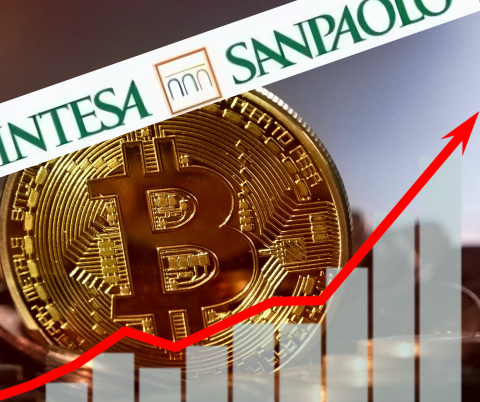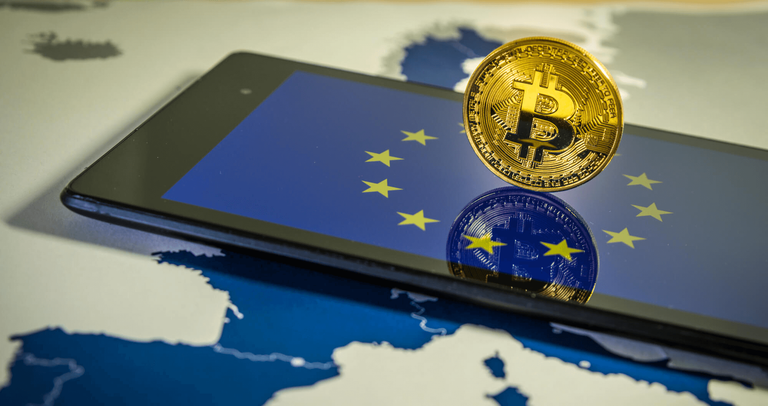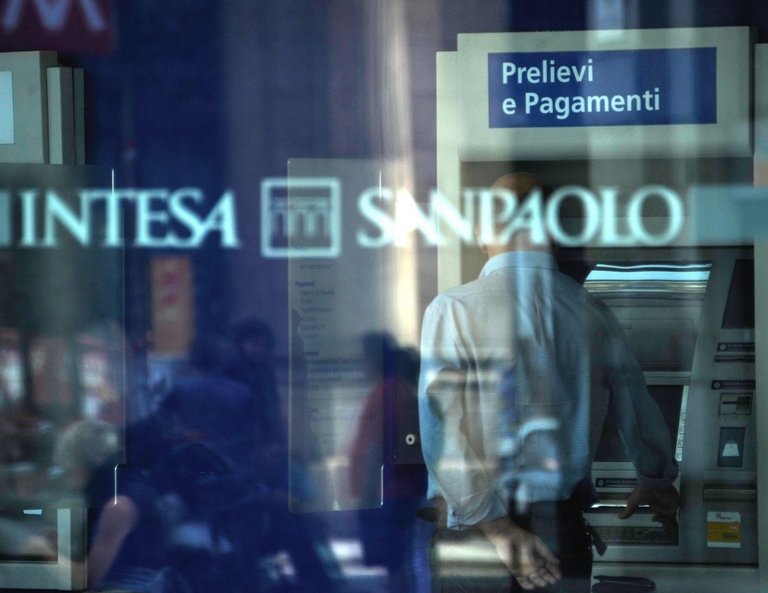
Italy's largest bank by assets, Intesa Sanpaolo, has made history by purchasing 11 Bitcoins valued at approximately €1 million ($1.02 million) on Monday. According to a report from Wired Italia, this is the first direct cryptocurrency transaction ever executed by an Italian credit institution, signaling a significant development in the integration of digital assets within traditional banking.
###Details of the Bitcoin Purchase
The crypto acquisition was first disclosed on the imageboard 4Chan, where employees of Intesa Sanpaolo flagged the transaction. This was later confirmed by Niccolò Bardoscia, the bank’s head of digital assets trading and investments, in an internal email:
"As of today (Monday), Intesa Sanpaolo owns 11 Bitcoins. Thank you all for the teamwork."
While Bardoscia acknowledged the transaction, he refrained from providing further insights into the motivations behind the purchase or whether it signals a broader strategy to adopt Bitcoin or other cryptocurrencies. It remains uncertain whether this move is part of a long-term plan to expand the bank’s crypto services.
Expanding Into Crypto Spot Trading
This purchase comes shortly after Intesa Sanpaolo expanded its digital assets desk in November 2024 to cover spot trading for cryptocurrencies. Previously, the bank only dealt in crypto options, futures, and exchange-traded funds (ETFs). However, the spot trading operations have not yet been fully launched, leaving the recent Bitcoin transaction a noteworthy exception.
The bank has also collaborated with Ripple Custody (formerly Metaco) to support tokenized asset custody, demonstrating its broader commitment to blockchain-based solutions.

Context: Italy’s Evolving Crypto Ecosystem
Intesa Sanpaolo’s foray into Bitcoin comes as Italy’s crypto regulatory landscape undergoes significant changes:
Crypto Tax Reforms:
In December 2024, Italy’s Senate finalized new tax policies for cryptocurrency capital gains. A 26% tax rate will be applied to crypto profits starting in 2025, increasing to 33% in 2026. These revisions are part of a broader effort to clarify the nation’s approach to crypto taxation.MiCA Regulation Implementation:
The European Union’s Markets in Crypto-Assets (MiCA) regulation is reshaping crypto governance across Europe. Italy has begun implementing MiCA through the Legislative Decree of September 5, 2024, assigning the Commissione Nazionale per le Società e la Borsa (Consob) and the Bank of Italy as key regulators. MiCA is expected to standardize rules for crypto service providers and enhance investor protections across the EU.Institutional Digital Asset Initiatives:
In July 2024, Intesa became the sole institutional investor in a digital bond issuance by the Italian development bank, Cassa Depositi e Prestiti. This marked a pivotal moment in the adoption of blockchain-based financial instruments within Italy’s banking sector.
A Growing Trend Among Traditional Financial Institutions
Intesa Sanpaolo’s Bitcoin purchase reflects a broader trend of traditional banks and financial institutions exploring cryptocurrency as an asset class. While still cautious about volatility and regulatory uncertainties, these institutions increasingly recognize the potential of digital assets for portfolio diversification and technological innovation.
The move also aligns with President Vladimir Putin’s crypto pivot (mentioned in prior reports) and global interest in adopting crypto within institutional finance.

Significance for Italy’s Financial Sector
Intesa Sanpaolo’s historic transaction underscores the growing integration of cryptocurrencies into Italy's financial mainstream. As the country’s regulatory framework matures under MiCA and new tax policies, institutions like Intesa are positioned to play a pivotal role in defining the future of digital assets in Italy and Europe.
The bank’s adoption of Bitcoin may pave the way for other financial institutions in the region to follow suit, further legitimizing cryptocurrencies in traditional finance. As Bardoscia stated, this transaction marks an important step, but its implications for long-term crypto strategies remain to be seen.
